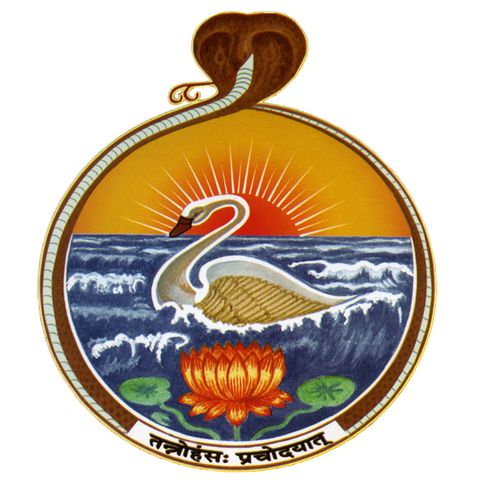5 - Direct and Indirect Methods of Explaining the Unexplainable Brahman | Swami Tattwamayananda

Download and listen anywhere
Download your favorite episodes and enjoy them, wherever you are! Sign up or log in now to access offline listening.
Description
Verses: I.9, II.1. This discourse was given on July 31, 2019 at the Lake Tahoe Retreat run by the Vedanta Society of Northern California by Swami Tattwamayananda. -Rtam, Satyam, and...
show more-Rtam, Satyam, and Dharma are explained.
-Svadhyaya and Pravacana are explained.
-Vedanta allows us to see all of the world’s traditions from a universal perspective. We expand beyond our immediate interests, needs, and physical body. Our svadharma helps all people.
-The four ashramas are reviewed. The importance of learning to retire gracefully is emphasized. 70% of ancient sages were retired householders who knew how to work not out of compulsion.
-An indirect way of explaining Brahman, which cannot be explained, is typified by Varuna’s successive instructions relating the ultimate reality to that which we normally understand.
-The direct method (swarupa lakshana) method of explaining Brahman, is typified by the discussion between King Janaka and Yajnavaklya in the Brihadaranyaka Upanishad. The question is what serves as light for a man and the student is led to understand that the sun, the moon, fire, sound, and the mind all get their light from the Atma, the light of all lights which is self-revealed.
-The concept of aparoksha anubhuti, non-indirect experience, is clearly explained in reference to Brahman.
-Brahman is beyond the six changes that characterize all entities within time, space, and causation.
-Brahman is not the effect of any cause. It is not manufactured, not attained, not the result of a process of refrainment, nor through a process of change. It is de-hypnotization through removal of obstacles. It is returning to our own home.
-Two approaches to realization are explained: (1) immediate experience through listening once due to extreme spiritual fitness, (2) 7 disciplines of practice that allow us to gradually increase our fitness.
-Life becomes an enjoyable spiritual pilgrimage concentrating on a higher spiritual goal.
-Thoreau is cited as an example of a practitioner of tapa, austerity.
Information
| Author | Vedanta Society, San Francisco |
| Organization | Vedanta Society, San Francisco |
| Website | - |
| Tags |
Copyright 2024 - Spreaker Inc. an iHeartMedia Company
